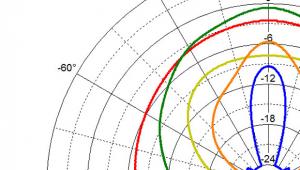HTPC Update #3: My Favorite Upgrade, the Video Card Page 3
During
Ok, now you're ready for the actual swap. Remember, don't touch anything you don't have to. This includes the video card. Touch edges, nothing coppery.
7) Manually remove the old card. There are likely screws attaching it to the case near the end where the monitor plugs in. With PCIe there can also be a plastic catch at the connection to the motherboard. If the card doesn't pull out easy, you're missing something. Once removed, place the card aside. Add it to your collection of "Things you think you'll use again but never will."
8) Careful! Stop touching things! Use the Force to levitate the card into the computer case. If you aren't Force sensitive, carefully position the card over its slot.
9) Insert tab A into slot B. Heh, heh. It should click right in. Secure it to the case with the screws it came with, or that you removed when taking out the old card.
10) Attached any necessary power plugs to the new video card. Either the cables that came with it, or if you're lucky there are spares dangling off the back of the PSU.
11) Check your work. Make sure everything is secure. Now would be a good time to check the connections (gently) of everything in the case, and to blow out whatever dust you can find with the compressed air.
12) Plug your monitor/TV into the new card, attach the PC's power cable, and fire that beast up.
13) Wait. With any luck you won't hear any extraneous beeps or bleeps of death. If nothing happens, check your work again.
14) Eventually, you'll get into Windows. Follow Windows's instructions. With any luck, it will be ready for you to install the new drivers. Do so.
15) Wait. Restart if necessary.
16) Reinstall DirectX 11. Not strictly necessary, but what the hell, it won't hurt.
17) At this point, you should be ready to go.
If you're upgrading from onboard graphics, you obviously don't have an original "card" to remove. The steps are largely the same, you just need to disable the onboard graphics at step 3 above. I've never done this, but it should pretty straightforward. Generally you should just be able to disable the graphics device in the Device Manager as above. I recommend Googleing your motherboard's model number and "disable onboard graphics," just to be sure.
Speaking of Google, don't be afraid to search for more info at any step. Even just typing in your question will often yield countless result from others who've had a similar issue, usually followed by helpful answers.
And when in doubt, follow the manufacturer's instructions.
For more HTPC info, check out the previous entries in this series:
HTPC Update #2: Of Mice and Mousepads
- Log in or register to post comments




































































